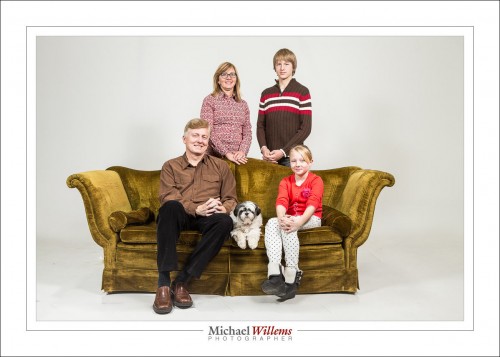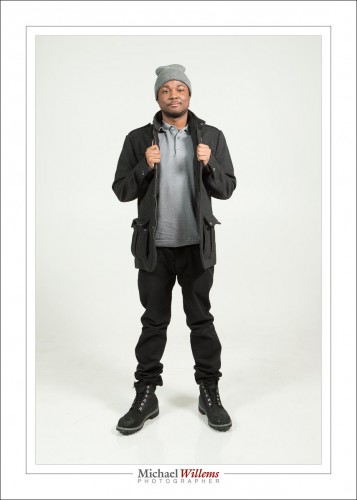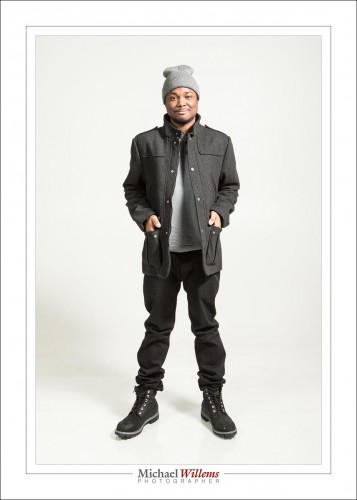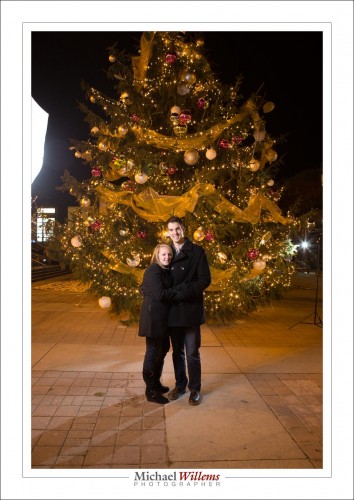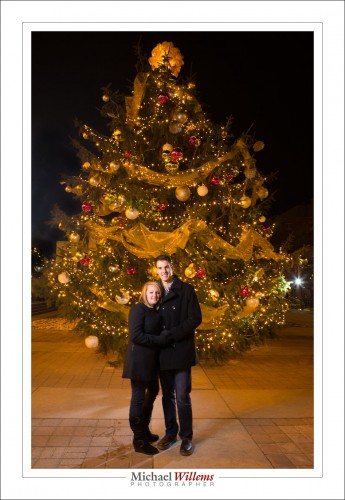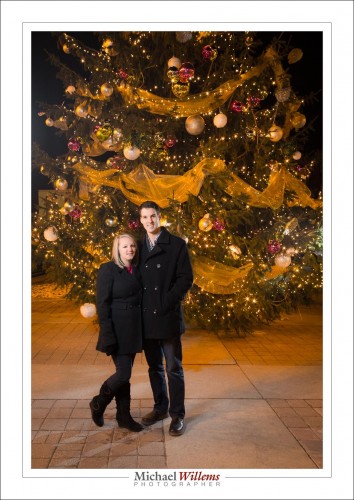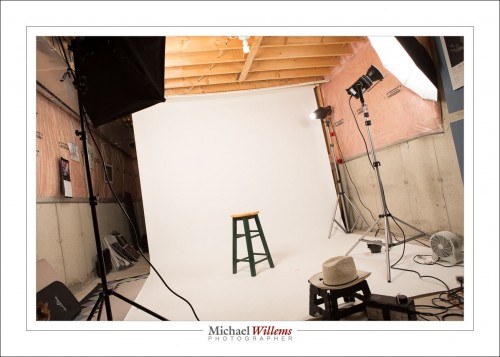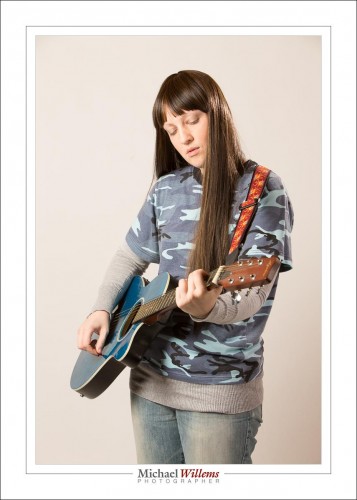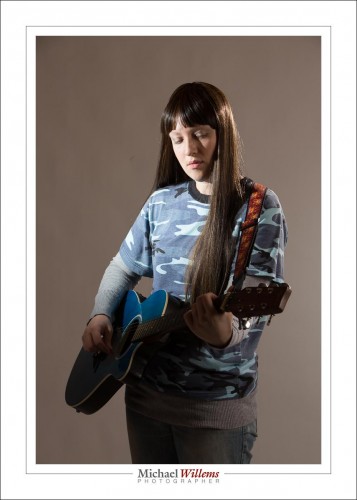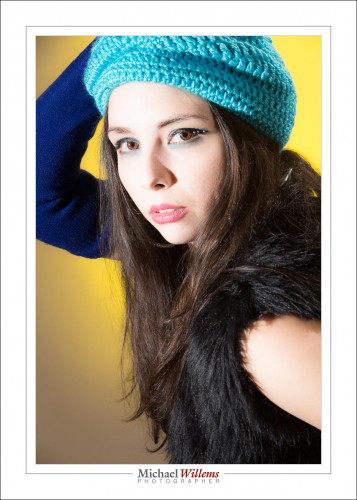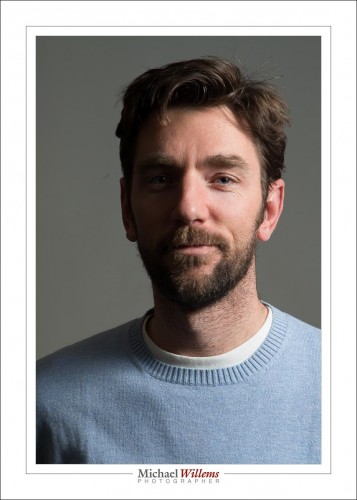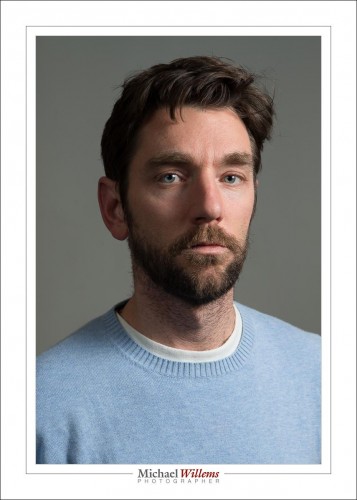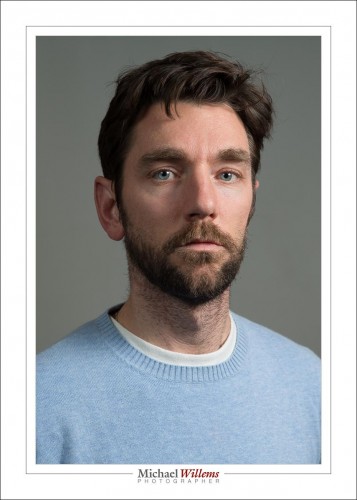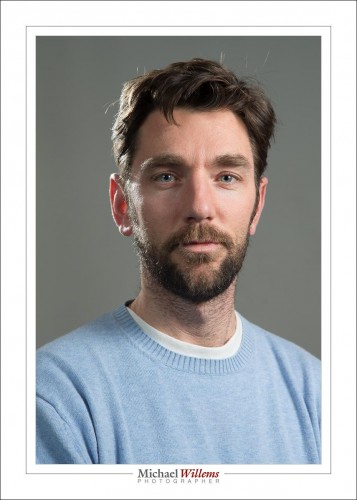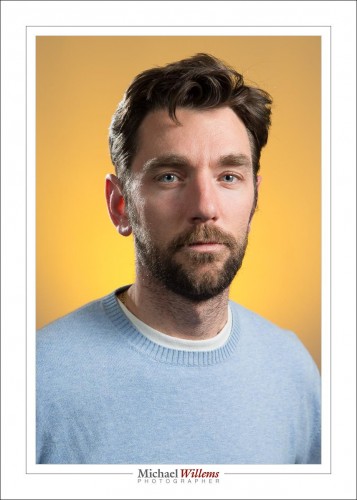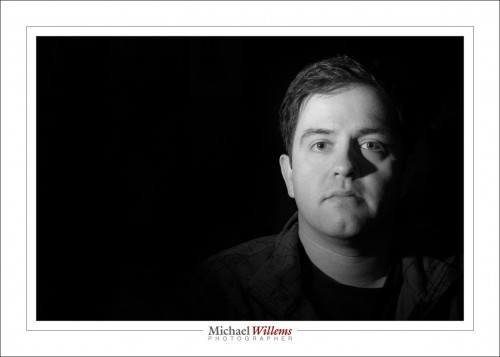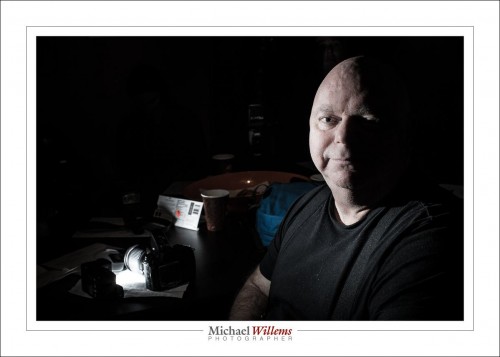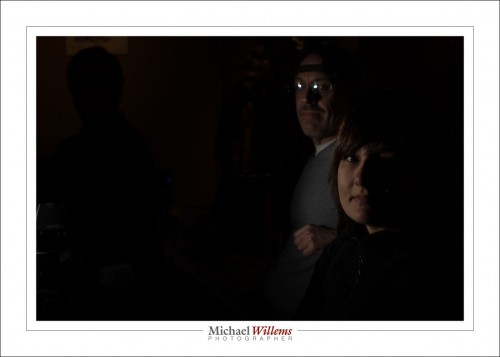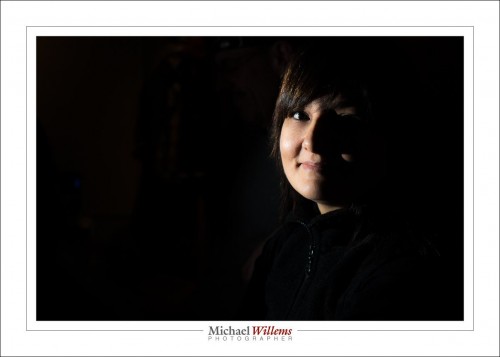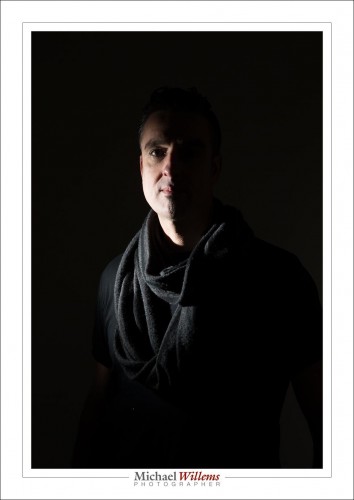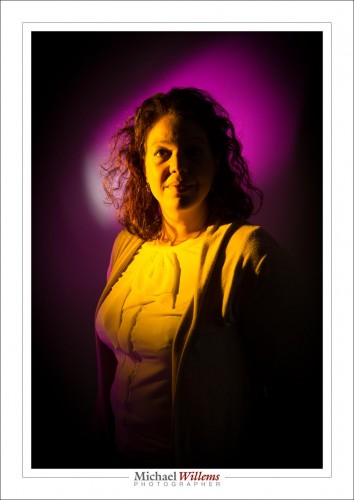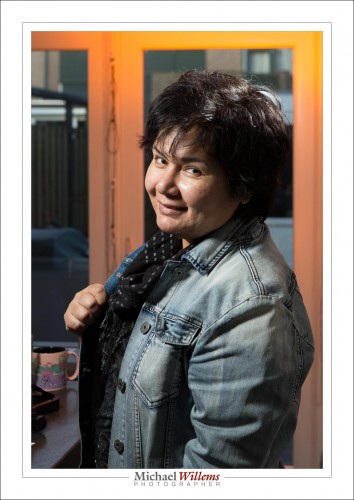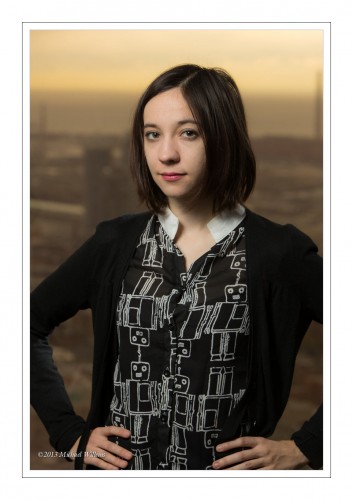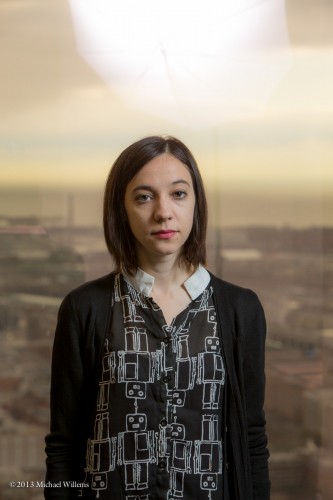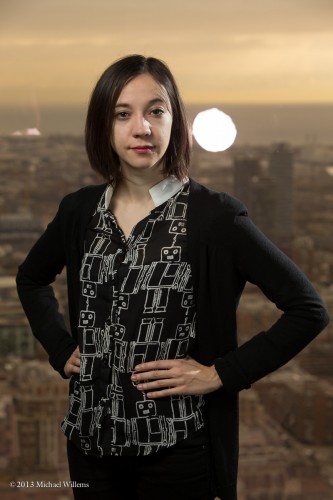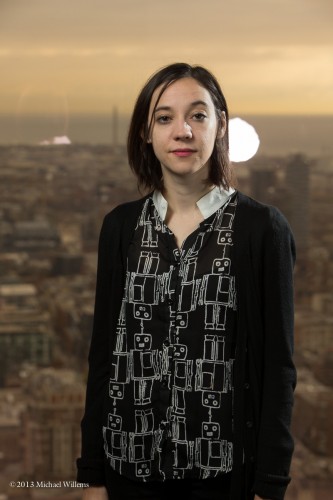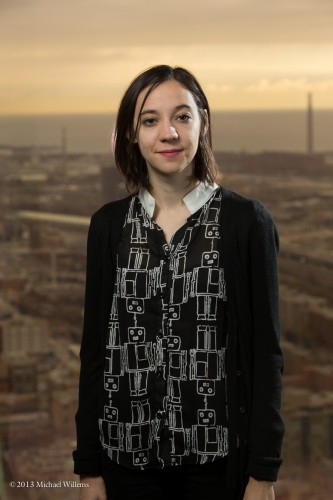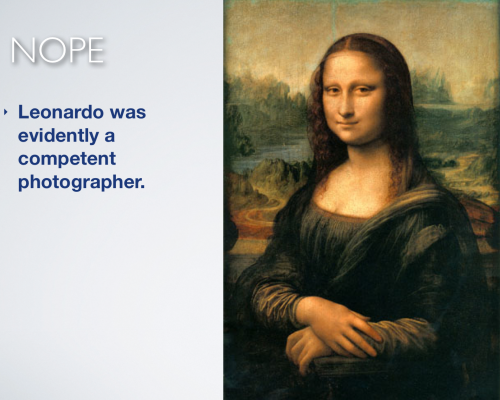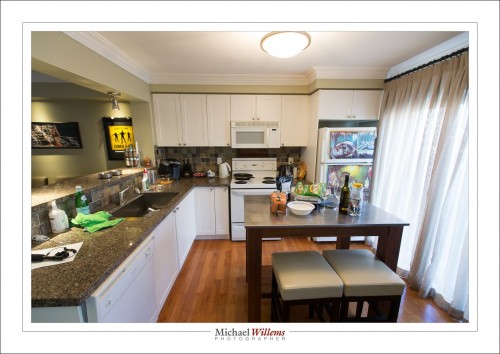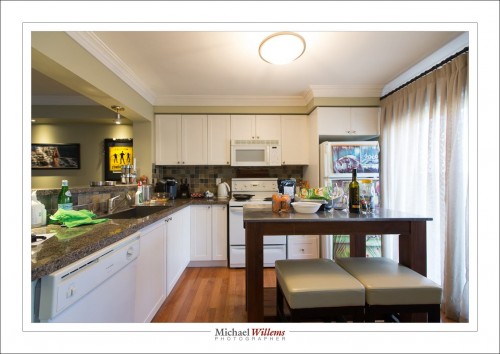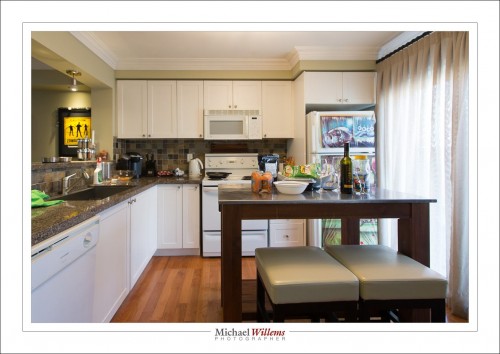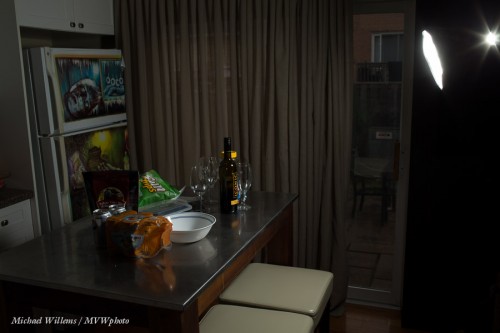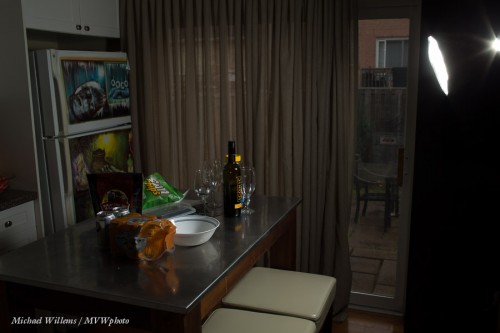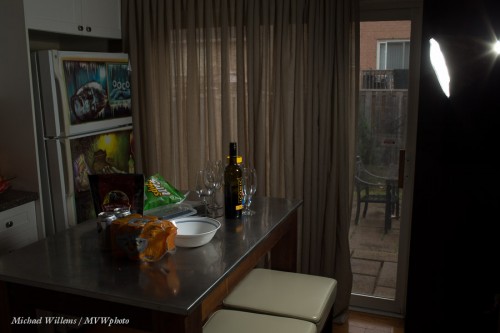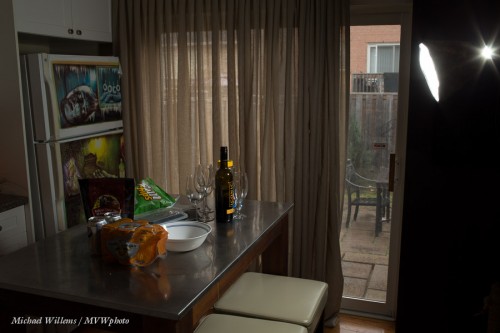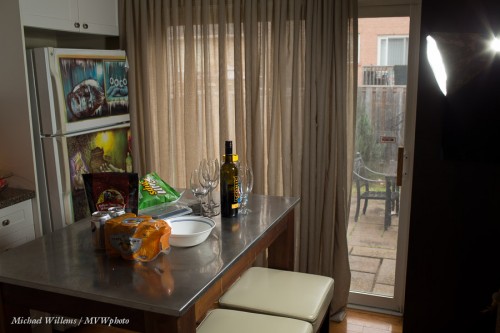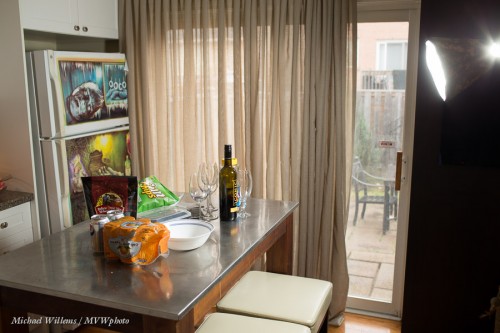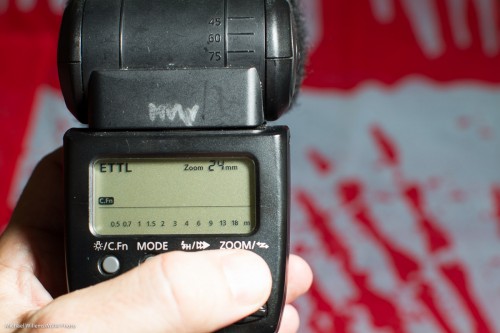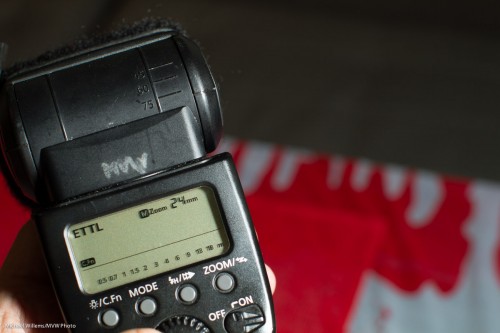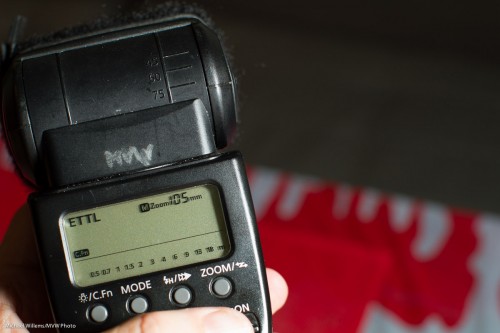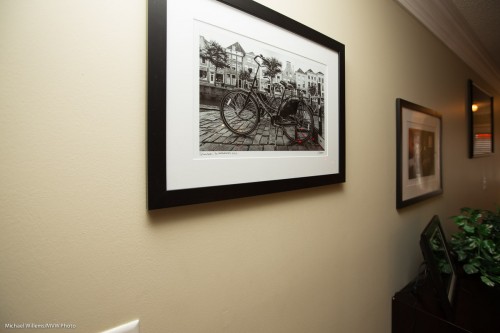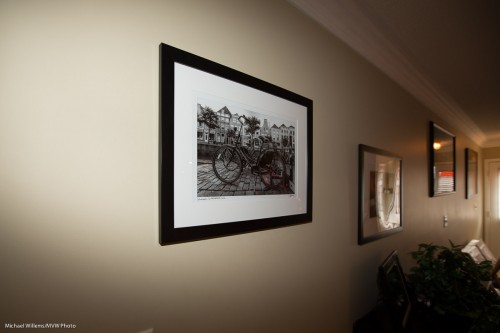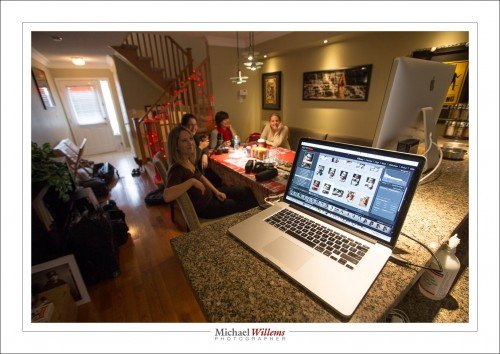That’s what cops say when they discuss stopping someone in traffic. But it is what I say when I am talking about studio lighting.
For a family, as in the course I taught Sunday for the Ajax camera club, I use simple lighting: two umbrellas (they throw great soft light everywhere), one on each side:
Not a lot of modelling (shaping with light), but very suitable for a group. Easy, foolproof, nice and crisp lighting.
Now, when I have one subject I can of course do the same:
And sure enough, that works. But can you see how much better it works when I turn one of those flashes up a stop, and the other down a stop? Here:
See that? We have now shaped (modelled) the face and made it into not a flat shape, but a round shape. That brings the person alive. There is a slight shadow behind him. That also brings depth into the image.
Altogether a better idea when you have one person – usually. In the next datys,more examples of studio lighting.
In these pictures, the camera was on manual, as were the flashes. 1/200th sec at f/8, 400 ISO.
Why those settings? I want to kill the bright studio ambient light (high f-number, low ISO, fast shutter). But I am also cognizant of the fact that I am using speedlights, which have limited power, especially once I fit them with modifiers (that means low f-number and high ISO). So I need to find a good middle point. And that was it, in this studio.
More on studio flash in the next days. Um, and if you enjoy these posts, don’t forget to tell all your friends to check speedlighter.ca daily.

